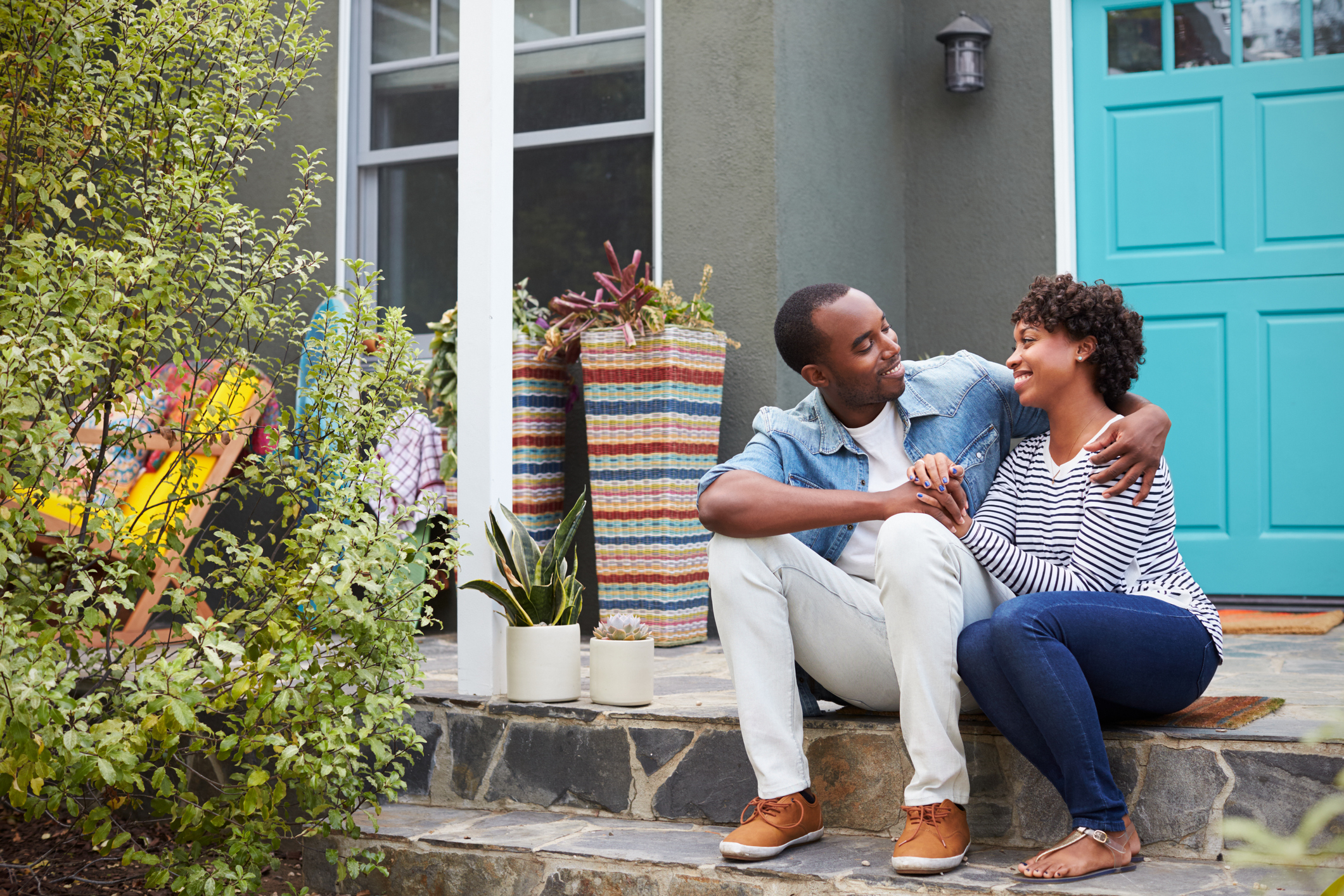How to Set a Budget to Buy Your First Home

Everyone gets excited about buying a home, and even more so if it’s your first. For most buyers, it’s fun to go to open houses and take a look at all that’s out there on the market. You get lots of ideas and inspiration for fine-tuning and customizing the house that will ultimately be the best fit for you.
While most homebuyers are familiar with these more glamorous aspects of the buying journey, you might feel unprepared for the equally important task of budgeting to make your first home purchase a reality. After all, it can feel difficult to know where to even get started to prepare financially for buying your first home.
That’s why we want to help with our beginner’s guide to budgeting for your first home. We will cover how to set a spending cap for home purchase, factoring in homeownership costs, and practicing living on your homeowner budget. We hope with these tips that you’ll create your own, personalized path to your first home.
Figure Out Your Maximum Purchase Limit
The first step in coming up with a budget for your new home purchase will be calculating your spending cap. In other words, determining the maximum amount you’re willing to pay for your new house.
An industry-standard guideline for how much of your monthly income you should spend on housing is 28% of your gross. This number comes from the 28/36 rule, which also suggests you shouldn’t spend more than 36% of your gross monthly income on all your debts combined, including bills like an auto loan or credit cards. This monthly budget worksheet will help you get started.
Here’s an example of the 28/36 rule helping our prospective, fictitious buyers, Shan and Cher. Shan makes $3,200 per month, and Cher brings in $5,500 per month. Together they make $8,700 per month. If you calculate 28% of $8,700, you get $2,436. That’s the maximum mortgage payment amount they should be looking at, based on this rule. Additionally, they shouldn’t be spending more than $3,132 per month on all major debts combined.
The best way to get a real number for your maximum purchase limit to use as you search for a home and finalize your budget is by getting pre-qualified or pre-approved.
Consider Your Down Payment
While the 28/36 rule can provide some guidance on figuring out how much of a mortgage payment you can afford, another top consideration should be your down payment.
Down payments can vary widely depending on the loan program you’ll be using to finance your home. Conventional loans, for example, require a minimum of 3% of the total purchase price as a down payment. Other specialized programs, like VA or USDA loans, can allow for buyers to complete the purchase with no money down.
Your down payment will depend on which loan programs you qualify for and select for your financing and how much you can afford while also saving funds for other homeownership costs. Your loan officer is one of the best resources for getting a firm handle on pinning down a down payment range.
Find a Manageable Property
Aside from firm numbers, like the 28/36 rule and your down payment planning, you’ll want to think both optimistically and realistically when narrowing down your potential purchase options. It may be tempting to go for the biggest house you can find within your price range, but that might bring on unwanted stress.
Reflect on any major repairs that might be necessary, or upgrades you’re strongly considering, and make sure you can comfortably accommodate those costs. Getting a fixer-upper might sound like a great challenge at first, but as you start to estimate the costs of materials and labor, you might find out it’s not the right choice as your first home. On the same token, a turn-key home might have a lot of allure, but prove too expensive when factoring in other homeownership costs.
Budgeting for Homeownership Costs
Owning a home includes paying for more than just your mortgage. You’ll have other costs like homeowner’s insurance, property taxes, and private mortgage insurance to factor in. And then there are monthly bills, like air conditioning and utilities, along with unexpected expenses to account for, like maintenance and repairs.
Selecting a home that you love and that also leaves some wiggle room in your budget will help ease you into your homeownership journey, as opposed to stretching your budget too thin and causing financial stress.
Set and Carry Out Your Budget Plan
A tried and true method for any budget is to practice putting it into action. Once you’ve settled on a potential mortgage payment amount, pull those funds out of your checking account and set them aside each month for a couple of months. See if you can live out your budget comfortably, as this will help you determine if your plan is practical.
An added bonus is that you’ll be setting aside savings that can help with your down payment and closing costs too.
We hope this starter guide has been useful as your plot out your path to buying your first home. It can be tough just to figure out where to start, and what works for someone may not for someone else. These tips are meant to help jumpstart your journey, along with the help of a seasoned mortgage advisor like one of our loan officers.
The included content is intended for informational purposes only and should not be relied upon as professional advice. Additional terms and conditions apply. Not all applicants will qualify. Consult with a finance professional for tax advice or a mortgage professional to address your mortgage questions or concerns. This is an advertisement. Prepared 7/29/2021.
